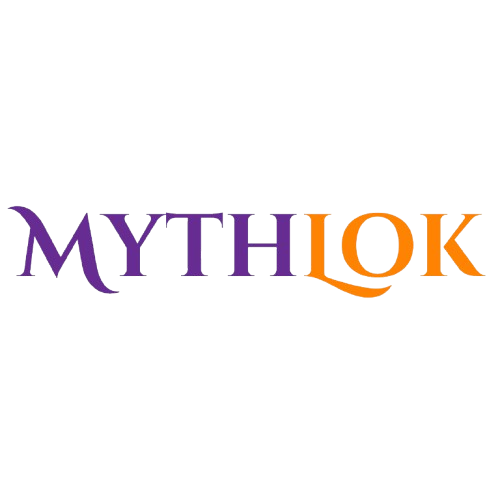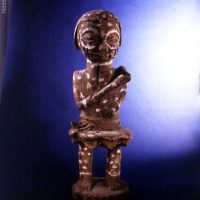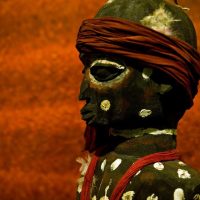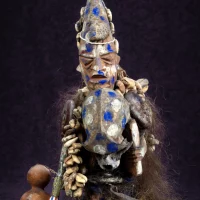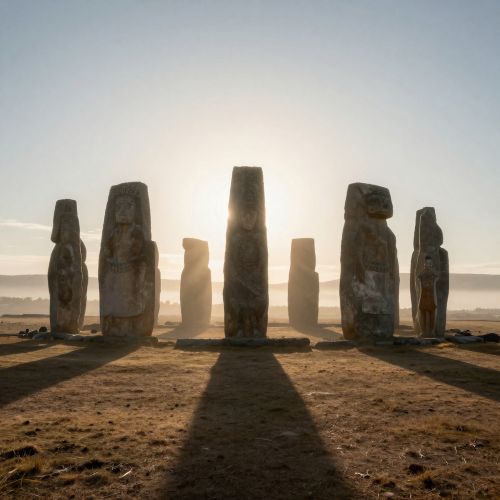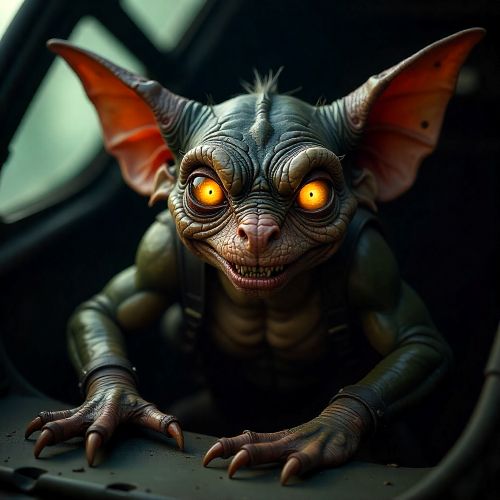Genderuwo : The Trickster Spirit
Listen
At a glance
| Description | |
|---|---|
| Origin | Indonesian Mythology |
| Classification | Spirits |
| Family Members | N/A |
| Region | Indonesian |
| Associated With | Shapeshifting, Invisibility |
Genderuwo
Introduction
The Indonesian archipelago is renowned for its diverse cultures and intricate mythologies, housing a multitude of captivating creatures, including the Genderuwo. This spirit is known for its mischievous antics and occasionally malevolent desires, occupying a significant place in Javanese folklore. Genderuwo, deeply rooted in Indonesian mythology, is a mystical being with a terrifying visage and extraordinary powers, pervasive in traditional tales and beliefs. Its legend intertwines elements of mystery, fear, and cultural heritage, reflecting the profound complexities of Javanese spirituality and humanity’s darker facets.
Physical Traits
The Genderuwo is typically described as a large, hairy humanoid creature, towering over humans with a muscular and imposing frame. Its body is covered in thick, coarse hair, with long, sharp claws and a grotesque, fearsome face. Its eyes are particularly striking, glowing red or green, capable of piercing through the darkest of nights. Despite its frightening appearance, the Genderuwo is depicted with an almost human-like form, albeit exaggerated in size and wildness, which adds to its terrifying yet captivating allure. The creature’s reddish-black or dark brown skin complements its thick, coarse hair, which instills fear and disgust in those who encounter it.
Descriptions vary, sometimes portraying the Genderuwo as ape-like or emphasizing a more human-like appearance. Its size is also inconsistent across tales, depicted as either a towering giant or closer to human height, hinting at its shapeshifting abilities that further confuse and frighten its victims. Known for their immense physical strength and ghastly appearance, Genderuwo are formidable entities in Indonesian folklore, their glowing eyes and hairy bodies leaving a lasting impression of dread on those who cross their path.
Family
Genderuwo, part of Indonesia’s rich folklore, exists within a broader spiritual realm alongside various supernatural beings. While specific familial connections are sparse, Genderuwo is frequently grouped with other entities, hinting at shared origins in Indonesian mythos. Unlike mythical creatures with intricate family structures, Genderuwos are believed to be transformed spirits of humans who met violent or premature deaths, wandering the natural world independently. They interact with humans, sometimes seeking retribution or completing unresolved tasks, contributing to their haunting presence in certain locales. Though solitary in nature, Genderuwo variants suggest links to other malevolent spirits like Banaspati and Leyak in Indonesian spiritual lore.
Other names
The Genderuwo, rooted primarily in Javanese mythology, manifests in various forms across the Indonesian archipelago. Known as Gandaruwo in Sundanese lore and by names like Tokolo or Tuyul in other regions, these variations reflect Indonesia’s diverse folklore landscape. The names may differ slightly depending on local dialects and cultures, but they all depict a creature with similar core attributes: a frightening appearance, supernatural powers, and ties to the spirit realm. These regional nuances enrich the tapestry of Indonesian mythology while maintaining the fundamental essence of the Genderuwo myth.
Powers and Abilities
The Genderuwo, a formidable entity in Indonesian folklore, possesses a chilling arsenal of supernatural abilities. Its shapeshifting prowess allows it to mimic loved ones, luring unsuspecting victims, or transform into animals, sowing confusion. Immense strength complements its deceptive nature, empowering the Genderuwo to overpower humans. Some tales whisper of invisibility, a terrifying advantage for this trickster spirit. Beyond physical manipulation, the Genderuwo is said to influence human minds, causing nightmares and hallucinations.
It exerts control over the natural world, manipulating elements within its wild domain to create illusions and traps. Perhaps the most well-known power is its penchant for pranks, ranging from mischievous object-throwing to leading people astray. However, some stories portray a darker side – a strong sexual desire for humans, particularly women. Despite these formidable powers, there are ways to ward off the Genderuwo, offering specific foods or maintaining a clean and respectful environment.
Modern Day Influence
The Genderuwo remains a prominent figure in modern Indonesian culture, transcending its origins in ancient folklore. It is a popular subject across literature, film, and television, particularly in horror genres that blend traditional beliefs with contemporary storytelling techniques. In rural areas, belief in the Genderuwo persists and influences local customs and protective rituals against malevolent spirits. Even in urban settings, the Genderuwo’s presence in cultural consciousness endures through stories and warnings about its supernatural realm just beyond everyday life. Moreover, the Genderuwo has sparked discussions about mental health and societal issues, offering insights into psychological phenomena like sleep paralysis and collective fears.
This enduring cultural icon serves as a cautionary tale for children, reminding them of the dangers of the night and the consequences of misbehavior. In entertainment, the Genderuwo continues to feature prominently in horror movies and folklore-inspired fiction, ensuring its legacy is passed down to new generations. Beyond entertainment, the Genderuwo symbolizes human anxieties about the unknown and the darker aspects of existence. Its depiction in stories also touches on social anxieties and power dynamics, reflecting deeper societal concerns. Overall, the Genderuwo’s multifaceted presence in modern Indonesia underscores its role as both a timeless legend and a mirror to cultural fears and values.
Related Images
Frequently Asked Questions
What is lorem Ipsum?
I am text block. Click edit button to change this text. Lorem ipsum dolor sit amet, consectetur adipiscing elit. Ut elit tellus, luctus nec ullamcorper mattis, pulvinar dapibus leo.
What is lorem Ipsum?
I am text block. Click edit button to change this text. Lorem ipsum dolor sit amet, consectetur adipiscing elit. Ut elit tellus, luctus nec ullamcorper mattis, pulvinar dapibus leo.
What is lorem Ipsum?
I am text block. Click edit button to change this text. Lorem ipsum dolor sit amet, consectetur adipiscing elit. Ut elit tellus, luctus nec ullamcorper mattis, pulvinar dapibus leo.
What is lorem Ipsum?
I am text block. Click edit button to change this text. Lorem ipsum dolor sit amet, consectetur adipiscing elit. Ut elit tellus, luctus nec ullamcorper mattis, pulvinar dapibus leo.
What is lorem Ipsum?
I am text block. Click edit button to change this text. Lorem ipsum dolor sit amet, consectetur adipiscing elit. Ut elit tellus, luctus nec ullamcorper mattis, pulvinar dapibus leo.

